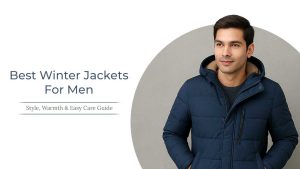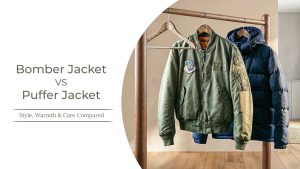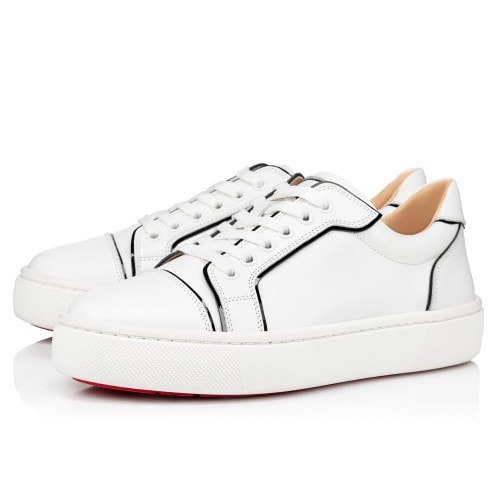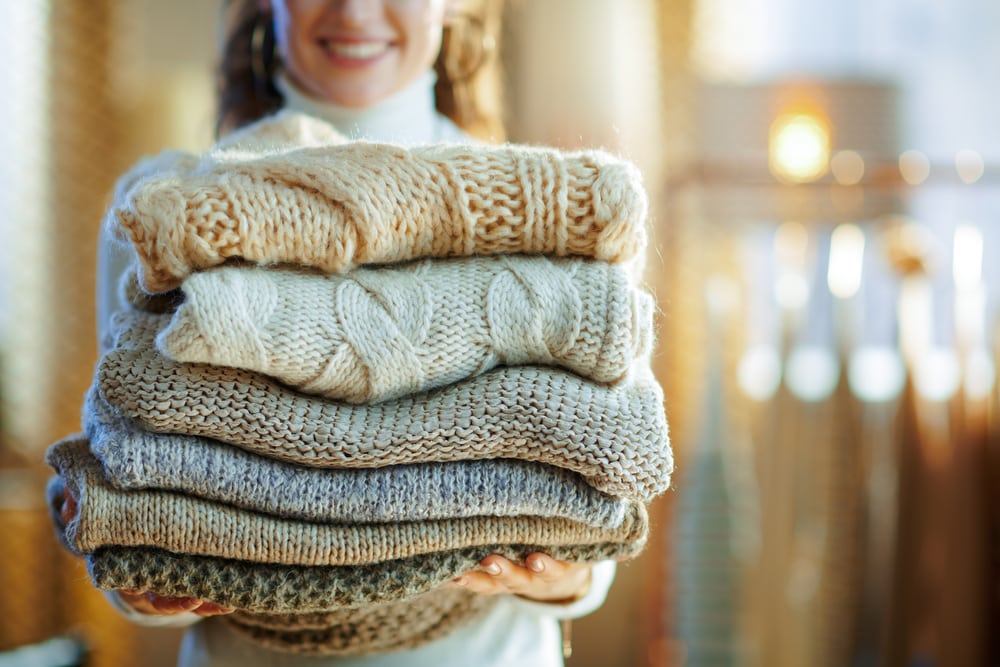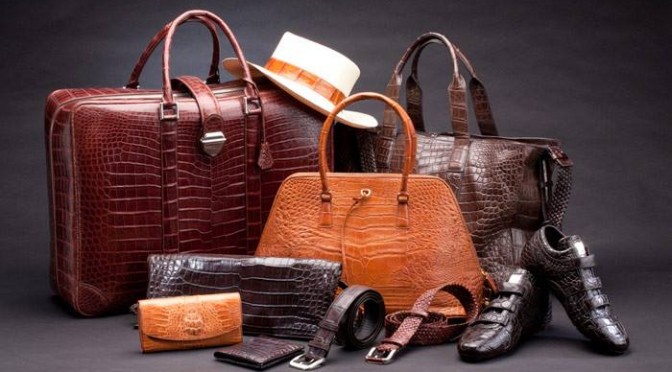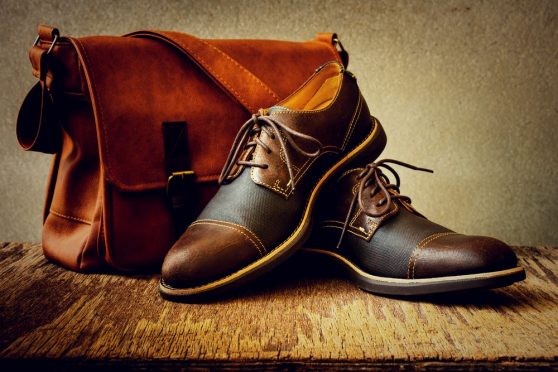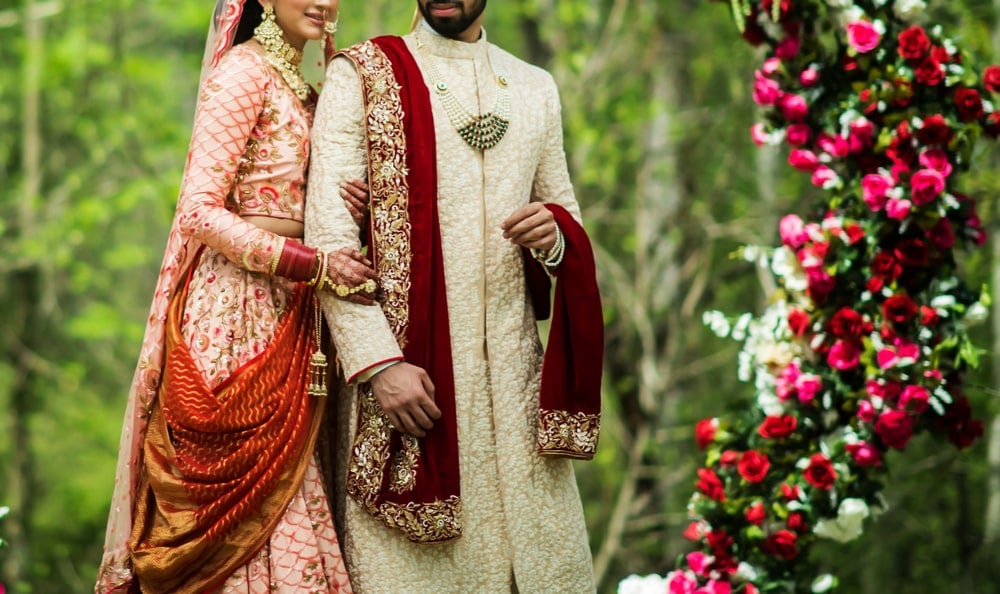Removing an ink stain is not only possible...
Read More- Blogs
- Dry Cleaning
- Top 10 Fabrics for Your Shirt: A Complete Maintenance Guide
Top 10 Fabrics for Your Shirt: A Complete Maintenance Guide
- Riya Yadav

Table of Contents
Selecting a fabric for a shirt is often more than just a question of the aesthetic appeal of the material. The fabric also has to be comfortable, lightweight, strong, and easy to maintain. Given the types of clothes material in the market, it is often quite overwhelming to find the right one. Some fabrics are light and suitable for summer, while others are heavier and are more suited for formal wear.
Textile-specific cleaning is a great way to clean a shirt so that it is properly maintained. It also feels freshly worn and retains its softness. Tumbledry is a specialized cleaning service that deals with the artistically clever and intentional wearing of cloth.
So, to simplify the decision that best fits the user’s way of life, this writing explains ten different shirt fabrics together with their most common defects and maintenance practices.
Read More: Top 30 Women Clothing Brands In India
Why Does Fabric Choice Matter?
Selecting the correct fabric for your shirt is not just a matter of looks. There is a matter of comfort, durability, and maintenance as well. The different types of clothes materials come with different benefits and challenges too. These benefits and challenges depend on your location, how frequently you wear shirts, and the activities you partake in.
For instance, some fabrics work like magic and keep you cool in the scorching heat, like cotton fabric for shirts and pure cotton shirts. Some fabrics, like flannel, give you warmth in chilly winters. Other fabrics like poly-blend are low maintenance, which means they do not require much care, as well as they dry easily and are wrinkle resistant. Other fabrics like silk and rayon require much more care and attention. They put a delicate and graceful touch on the wardrobe.
The right fabric also dictates how well a shirt matches your lifestyle. If you are the type of person who is busy on the move a lot, then a quick-dry fabric is suited for you. If you are attending a function, then more structured fabrics like Oxford cloth are a good match for you.
It is essential to understand the best fabric for shirts, shirt cloth types, and fabric for shirts. This is to ensure that there is comfort, style for the entire day. It is easier to take care of the shirt as well: the proper maintenance means your shirts will keep looking fresh for a longer period of time.
Read More: Top 10 Luxury Bag Brands In World
Top 10 Fabrics for Shirts
Here are the top 10 shirt fabrics for men that are highly preferred by men for the ultimate comfort and luxury.
1. Cotton – The All-Rounder
Cotton ranks among the most adaptable and most common materials used to make shirts. For everyday and warm weather, its softness and breathability make it the most comfortable fabric. Cotton absorbs and lets moisture circulate, which keeps it cool and comfortable. Though tough, it wrinkles easily if neglected.
Careful and regular tasks will preserve its appearance, but special precautions must be taken to avoid unwanted shrinkage. Cotton complements both informal and formal attire, which showcases its simplicity and great comfort. If it’s work or a more relaxed socialisation, a cotton fabric for shirts will always be a reliable and comfortable option.
Want a professional leather dry cleaning?
2. Linen – Lightweight Luxury
Perhaps the most comfortable and luxurious fabric is linen. Its texture is vintage and very light yet reasonably durable. Since it is highly porous, it is the most suitable fabric for very hot and humid tropical climates. Linen is casual and relaxing, effortless, and carefree. A gentle wash or hand wash is recommended
Linen is highly comfortable even when worn for long hours, owing to the fabric’s unique weave. Apart from being one of the best material for shirts, linen shirts are stylish, breathable, and give an effortless casual summer look.
3. Polyester – Wrinkle-Resistant Wear
Shirts made with a polyester blend are a common option due to their ability to retain shape and withstand heavy use and multiple washes. It is convenient and serves those with a busy schedule and frequent travelers due to its quick drying and wrinkle-resistant features. Even though it is sturdy, polyester is sensitive to high temperatures and can fade or be damaged by harsh chemicals.
The material is ideal for office shirts or for casual use, as it retains its shape and gives a polished appearance. Polyester shirts are also structure-retaining. With no effort, it can be maintained easily, making it a highly practical and dependable fabric for shirts also.
Don’t have time to remove stains?
4. Silk – Smooth Elegance
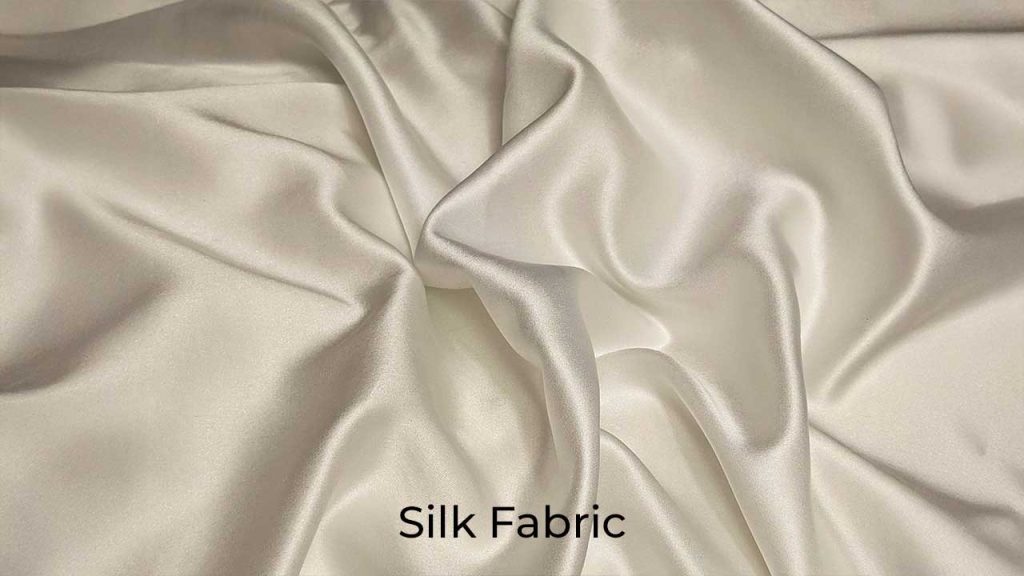
Silk is well-known for the luxurious feel one gets to experience when wearing the fabric, as well as its smooth nature and draping appearance. Silk is perfect for special occasions and formal events due to the fact that it drapes beautifully. However, Silk is also very delicate and easily stained, and thus needs to be washed and dried gently. Silk severely damages its fibers if exposed to high temperatures. Thus, it is best to be hand-washed and dried without sunlight.
Exceeding the expectations of delicate fabric, silk has an extreme degree of softness and sheen, therefore adding sophistication to any wardrobe. Silk shirts, when paired with the right outfit, effortlessly retain their softness and elegance, proving a timeless piece to formal wear collections. This sort of luxury shirt fabric needs to be owned to experience refined luxury.
Flat 20% off on 1st order-
schedule free pick up
5. Twill – Durable and Structured
Twill fabric is sturdy and has a structured form due to its diagonal weaves. The fabric is not only durable, but its texture also offers strength. Because of its texture, the fabric can also be considered semi-formal, making it a great fit for work. Though twill fabric has great shape retention properties, it can still be considered wear and tear resistant, accepting the fact that constant rough handling and high levels of heat can permanently flatten the texture.
Since twill shirts can be classified as easy to put on and there is a bit of an ironing hassle, conditions of gentleness for washing and restraining during drying must be met. The fabric has its merits, considering that it can sustain a comfy, cozy atmosphere, making it great for work or play.
For styling that is neat and structured, twill shirts are a reliable, durable answer for shirt fabric types.
6. Chambray – Casual Comfort
Chambray is a perfect fabric for casual outings. It is stylish and soft, and breathable. Chambray fabric pieces don’t rub against each other, which makes it easy to wear. A Chambray shirt is perfect for layering and can be worn alone, as it gives many style options.
Frequent washing or using strong detergents on it can lead to wear and fading. Thus, the fabric needs gentle care. Dressing down with tailored pieces balances the refinement and relaxed appearance, true to the essence of Chambray. It is soft, easy to wear, everyday use, and the ease of wear makes it one of the best options to consider for types of shirt fabric.
7. Flannel – Soft Winter Wear
The surface of flannel fabric is soft and warm, which is perfect for the cold months. The special brushed flannel helps to trap the heat and helps the wearer stay warm during the cold months. Though soft to the touch, flannel requires special treatment to avoid frizzing and loss of fibrous texture. The fabric of the flannel is over-washed, and the wrong detergents used on the flannel will cause the fabric to become coarse.
Soft and properly treated flannel will lose its texture, and the flannel will become coarse. The winter flannel shirts are the best because of the insulation. It is soft, warm, and comfortable to wear. The flannel shirt is either worn on its own or is layered for an extra warm, soft, and stylish shirt ideal for the winter.
8. Oxford Cloth – Classic and Crisp
Oxford cloth possesses the perfect balance of breathability and strength. It is commonly used in business and business-casual shirts since it provides a comfortable yet tailored finish. Its weave allows air circulation, so it is breathable enough for office wear while still looking smart. While it is crease-resistant, disregard and neglect of proper care can cause it to lose its shape.
To maintain firmness, shirts should be washed at moderate temperatures, and gentle detergents used. This classic cloth is long-lasting and adaptable, fusing style and practicality with ease. When looking for a smart, polished appearance, the best fabric for formal shirts is Oxford cloth.
9. Hemp Blends - Sustainable Strength
Hemp has sustainability as its center with its breathable and mold and moisture-resistant characteristics. Hemp blends are suitable for eco-conscious consumers, as the natural fibers are sustainably sourced. The nifty performance of the shirts made from hemp blends is genuinely comforting, which makes them ultra-wearable. The premium shirt fabric satisfies the lifestyle and eco-friendly objectives, which is the reason that makes them stand out as a premium choice.
10. Rayon Blend - Soft and Draped
Rayon blends have a very soft and smooth feel and a light and airy drape, making shirts effortless and shapely on the body. Its flowy look is appropriate for both casual and dressy events. However, exposing rayon, during washing, addition, or improper washing, is prone to stretching and shrinking.
Most importantly, do not overheat and stretch, as that will ruin the shape and construction of garments. Gentle detergent and air drying will preserve the soft texture and the structure. With a little more effort to maintain, comfort, and timeless style, Treon blends have a polished finish. For the blend of comfort and class, a smooth, flexible fabric like a rayon blend is perfect.
How to Choose the Right Fabric for You?
Each person has their own climate, lifestyle, and personal preferences, which will determine their ideal fabric for a shirt. For instance, hot and humid climates are best for breathable fabrics like cotton shirts or linen shirts. Extreme cold weather will require heavier materials like flannel and wool blends to keep warm and insulated.
How often do you wear shirts, and what activities do you do? For low-care and easy-use shirts, wrinkle-resistant polyester blends or quick-drying fabrics are ideal. For smarter occasions, the best fabric for formal shirts or types of Oxford cloth will add structure and sophistication.
Another simple yet important factor is the sensitivity of one’s skin. Natural fabric types of fabric for shirts cause little to no irritation to the skin in comparison to soft synthetic blends, which are durable but less breathable.
Finally, your fabric maintenance is also very important. Washing machine-friendly fabrics like polyester or cotton are also low maintenance. On the other hand, silk and rayon require special, gentle care.
Identifying the types of fabrics used in shirts, understanding the best fabrics for shirts as well as types of shirt fabrics, will aid in selecting shirts that will best suit your daily routine, whilst ensuring comfort, durability, and style.
Regional Guide: Shirt Fabrics in India
Being one of the Indian subcontinent, the climate is diverse, so the choice of fabric will depend on the region of residence. The humid coastal area will find cotton fabric for shirts as well as linen as the perfect choice, as they are lightweight and will keep the body cool. The northern colder parts, on the other hand, will prefer heavier fabrics like flannel or wool blends, which help to keep the body warm.
For the office, the more structured options like the best fabric for formal shirts, or types of shirt fabrics, are more practical, while still providing that polished look. Having knowledge of types of shirt fabrics in India will assist you in selecting shirts that are appropriate for the climate, while also fulfilling your day-to-day activities, comfort, durability, and style in mind.
Caring for Shirts by Fabric Type
Fabrics require different sorts of care in order for your shirts to look their best. For breathable and soft options like cotton fabric for shirts, it is best to use cold water and a mild detergent. High heat drying may be used, but it raises the chances of shrinkage and wrinkles.
Linen shirts, when slightly damp, please air dry and bulge with firm fingers to restore their snap and finish. A bit of softener makes the finish silky smooth. Now iron it for the best crack-resistant finish.
More delicate fabrics, such as silk or rayon, need attention. Use low-temperature washing and do not use strong detergent, as it may destroy the fabric. Gentle drying away from the sun is meticulously pursued to protect shine and softness. These fabrics are more demanding, hence extra care is needed.
Structured fabrics like Oxford or twill are bang on, but twill tends to be more delicate. These, of course, require considerate care as well. Washing in cool water followed by a delicate iron assures the fabric retains its edgy, stately smoothness.
Heavier fabrics like flannel are more forgiving, but to prevent pilling and overheating, use air drying with a soft detergent.
Companies such as Tumbledry provide specialized cleaning activities according to the needs of the customer’s fabric. Their specialized care ensures that each shirt made of cotton or costly blends remains soft, wrinkle-free, and long-lasting. Your shirts will remain as stylish and comfortable as the first time you wore them, thanks to expert cleaning as well as proper maintenance.
How Much Fabric Do You Need For A Shirt?
Understanding how much fabric will be needed is necessary for making & purchasing shirts. The quantity hinges on the type of shirt, its dimensions, design, and choice of fabric. Take for instance, a full sleeve shirt on average requires 2.5 meters of fabric, while a half sleeve shirt will usually require between 2 – 2.2m of fabric.
For certain materials, such as textured or patterned fabrics and fabrics such as checks & stripes, more fabric will almost certainly be needed in order to align the designs properly.
The weight of the fabric chosen will also determine how much fabric will be needed. Lighter materials such as cottons & linens will be easier to sew & cut, while heavier materials such as flannels & twills require extra seam & hem allowance.
Especially in the case of certain fabrics for shirts that shrink after washing, shrinkage should always be considered. For such fabrics, more than the estimated fabric should be purchased in order to ensure that adequate fabric will be available after tailoring. Besides Oxford shirts and blends, more stiff, structured fabrics can take longer to tailor finish shirts because they require more time and effort, whereas soft, structured fabrics used in casual shirts take less time and effort. Knowing what type of fabric is needed to make a tailored finish ensures that none is wasted
Conclusion
Incorporating the right fabric within a wardrobe is crucial for its functionality and design. Knowing the various types of clothes materials enables you to make decisions that suit your lifestyle, environment, and most importantly, individual needs.
Tumbledry’s expert cleaning services make sure that you do not have to worry about the care instructions of various fabrics or the condition of your favorite shirts. Each fabric comes with unique strengths, as well as care guidelines that are essential for its longevity. Use Tumbledry’s expert cleaning services for your shirts and ensure that you have ultimate fabric care. They will keep your shirts soft, smooth, and pristine, wear after wear.
This way you can keep your wardrobe timely, fashionable, and long-lasting. With Tumbledry, you are sure that the right fabric is paired with the right sophisticated care that your shirt needs.
Disclaimer: The opinions expressed in this article are those of the author. They do not necessarily purport to reflect the values or views of Tumbledry.
Traditional Dress Of Gujarat: History, Fabrics & Care
Many of us have been to Gujarat and...
Read MoreBest Laundry Basket Tips from Tumbledry Experts: Save
In this new blog, we are here with...
Read MoreDifferent Types Of Sarees You Can Wear On
Sarees are all time favorite for women, whether...
Read MoreTop Branded Handbags For Ladies With Their Maintenance
In India, women are looking for both accessories...
Read MoreHow To Wash Rugs For Living Room For
This diwali, if you are also concern of...
Read MoreBest Winter Jackets For Men: Style, Warmth &
In winters, jackets for men are significant parts...
Read MoreBomber Jacket vs. Puffer Jacket: Style, Warmth &
Bomber or Puffer, both types of jackets have...
Read MoreHow to Wash White Sports Shoes for Men
Are you also looking for a complete guide...
Read MoreHow To Wash A Woolen Shawl For Women
How to wash a woolen shawl for women...
Read More






